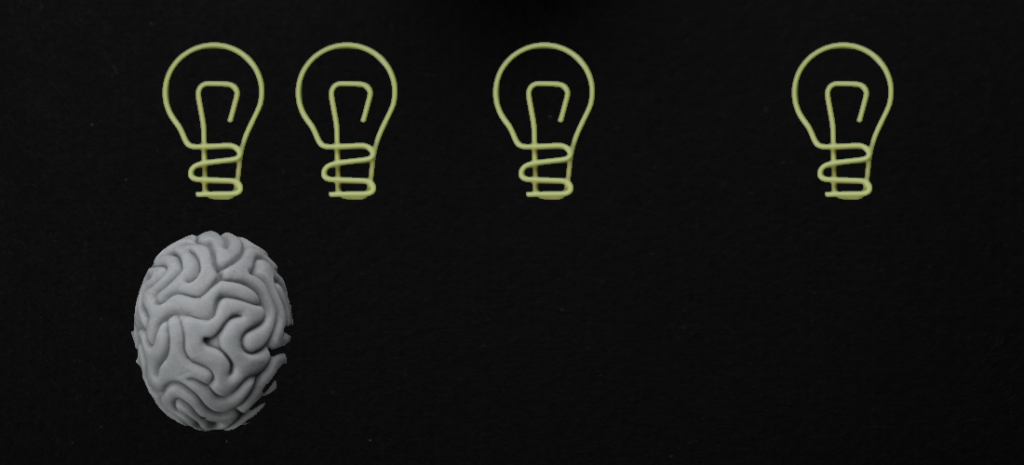Have you ever wondered why it’s so tough to remember a long string of numbers or a lengthy list of facts? It’s because our brains aren’t naturally designed to retain large amounts of unprocessed information. This is where chunking techniques come into play, a handy tool in the arsenal of effective learning strategies. The connection between memory and learning is undeniable — the better we can remember information, the more effectively we learn. However, the challenge often lies in our ability to retain that information, especially while studying or trying to master a new skill. So, how can we overcome this hurdle? Let’s dive into the world of chunking techniques and unlock the secrets to memory mastery.
Key Takeaways
- Chunking breaks down large amounts of information into smaller, more manageable pieces that are easier for the brain to process and remember.
- Identifying key concepts acts as anchors to build understanding around. Creating subtopics and categories organizes information hierarchically.
- Headings, subheadings, acronyms, and mnemonics can help chunk content into memorable units.
- Active recall through self-testing and spaced repetition helps reinforce chunked information in long-term memory.
- Chunking reduces cognitive load, enhances comprehension, retention and recall, and allows for critical thinking.
- Chunking works synergistically with other learning strategies like active learning and note taking for integrated frameworks.
- It is a flexible technique that can be adapted to different learning styles and subjects beyond just memorization.
- With practice, chunking becomes an invaluable tool for learning mastery, transforming study efficiency.
Chunking in the Context of Learning
Chunking is a fascinating technique that can revolutionize the way you remember information. Imagine this: instead of grappling with a long list of unrelated items, you break it down into smaller, manageable “chunks” of related data. It’s like organizing a messy room into neat, labeled boxes. Chunking is supremely relevant to learning because it works with your brain’s natural tendencies. Your mind loves order and patterns, and chunking satisfies this craving. So, the next time you’re facing a mountain of information, remember to use chunking. It’s not about working harder; it’s about working smarter.
The psychology of memory is integral to our learning process. Our brains are designed to process and retain information, and understanding how this happens can significantly enhance our learning efficiency. Cognitive psychologists often refer to the process of memory formation as “encoding,” “storage,” and “retrieval.” Encoding refers to the initial learning of information; storage refers to maintaining information over time; retrieval is the ability to access that information when you need it.
Chunking plays a key role in this process. By grouping related information into chunks, we increase the capacity of our short-term memory, allowing us to remember more. It’s like packing a suitcase – you can fit more clothes if you fold and organize them properly. So, when you’re learning something new, try to identify patterns and connections that can help you form “chunks”. By working with your brain’s innate propensity for patterns and order, you’ll not only remember more but understand it better too.
Chunking Techniques for Learning
Chunking is a powerful technique that can enhance learning by breaking down large amounts of information into smaller, more manageable chunks. Here are some techniques for implementing chunking in learning:
1. Identifying Key Concepts
Identifying key concepts is an effective chunking technique that can supercharge your learning process. Imagine this: you’re reading a lengthy document or trying to comprehend a complex theory. Instead of attempting to memorize every single detail, you can leverage this technique to break it down into manageable ‘chunks’.
Begin by scanning the material and identifying the fundamental concepts or ideas. These ‘chunks’ of information act as anchors, providing a scaffold on which to build your understanding.
By focusing on these core concepts, you’re able to create a mental map of the material, making it significantly easier to recall later. Just like solving a puzzle, once you’ve recognized the corner pieces (key concepts), the remaining pieces fall into place much more naturally.
2. Creating Subtopics and Categories
Let’s dive into one of the most effective chunking techniques – creating subtopics and categories. Imagine you’re faced with a sea of information, almost overwhelming to look at. Instead of trying to swim through it all at once, you can break it down into manageable pieces, or “chunks.”
This is where creating subtopics and categories comes into play. Start by identifying broad themes or categories within the information – these form the major chunks. Then, each major chunk can be broken down into smaller sub-topics or categories, making the information much easier to process and remember.
Your brain loves organization, and this technique feeds directly into that love. This way, whether you’re tackling a new language, a history lesson, or a business strategy, you’re giving your brain a helping hand to absorb and retain information better.
3. Organizing Information Hierarchically
Organizing information hierarchically is a powerful chunking technique that can revolutionize your learning process. Imagine your brain as a gigantic filing system. Just as you would group related files together in a cabinet, this technique involves grouping related information together in your mind.
Start with broad concepts or categories, and then break those down into smaller, more specific chunks of information. For example, if you’re studying biology, you might start with the broad category of ‘mammals’, then break it down into subclasses like ‘primates’ and ‘carnivores’, and then into individual species.
This method makes it easier to retrieve the information later because it creates a clear, structured path to follow in your mind, enhancing your memory mastery. Remember, just like a well-organized file cabinet makes finding documents a breeze, a well-structured mind makes learning and recalling information far more efficient.
4. Using Headings and Subheadings
Headings and subheadings can dramatically improve your learning effectiveness. Think of them as signposts along your learning journey, breaking up the dense forest of information into manageable chunks. This technique works wonders because it strings together related ideas under one banner, making the information easier to digest.
Just imagine, instead of trying to remember a long, unbroken paragraph, you have headings and subheadings to guide you. Each heading encapsulates a key idea, and the subheadings beneath it explore that idea in more detail.
This way, your mind isn’t overwhelmed with trying to comprehend everything at once. Instead, it focuses on one concept at a time, allowing for a deeper and more comprehensive understanding. This is the beauty of using headings and subheadings as chunking techniques in learning.
5. Applying Mnemonic Devices and Acronyms
Applying Mnemonic Devices and Acronyms can be a potent chunking technique in your learning arsenal. Think about it this way: isn’t it easier to remember a catchy acronym than a list of random words?
Mnemonic devices can help you encode information in a fun, memorable manner. For example, you can use the acronym ‘HOMES’ to remember the Great Lakes: Huron, Ontario, Michigan, Erie, and Superior. Acronyms turn a long list into a single, easy-to-remember word or phrase.
So, next time you’re confronted with a mammoth list or a complex concept, try breaking it down into smaller, digestible chunks using acronyms or mnemonic devices. You’ll be surprised at how much more you can remember!
6. Memorizing Formulas and Equations
Memorizing formulas and equations can seem like a daunting task, but chunking techniques can make it a breeze. With chunking, you break down complex formulas or equations into smaller, manageable ‘chunks’.
For example, consider the quadratic formula. Instead of trying to memorize it as one long string, you could break it down into a few chunks: the part under the square root, the fraction, and the ‘plus or minus’ symbol. By focusing on one chunk at a time, you reduce cognitive overload, making the formula easier to remember.
7. Learning Vocabulary and Terminology
Imagine you’re trying to grasp a new language or a technical subject with its own lexicon. Instead of memorizing each term in isolation, chunking allows you to group related words together.
For example, in learning a foreign language, you might chunk vocabulary by theme such as food, family, or travel. This methodology not only facilitates easier recall but also helps you understand the context and interrelationships between different terminologies.
8. Practicing Active Recall and Spaced Repetition
Imagine you’re trying to learn a new language. Instead of just reading through the vocabulary list multiple times, you actively test yourself by recalling the words and their meanings. That’s Active Recall in action. But how about Spaced Repetition? This is where it gets even more interesting.
Spaced Repetition is the practice of reviewing information at increasing intervals over time. Here’s the idea: after the initial learning, you might review the material after a day, then a few days later, then a week later, and so on. This pattern helps to reinforce the information in your long-term memory, making it more accessible when you need it.
Combine Active Recall with Spaced Repetition, and you’ve got a powerful chunking technique for learning anything you set your mind to. It’s not only efficient but also highly effective in helping you retain information for longer periods.
9. Self-Testing
Self-testing is a powerful chunking technique that you can utilize to master your learning process. This technique involves reviewing your learning materials and subsequently testing your knowledge and comprehension. But why self-testing? Well, it’s simple. This method of ‘chunking’ information forces you to recall information, which strengthens neural pathways and makes future retrieval of that information easier. Plus, it allows you to identify areas where your understanding may be lacking, so you can focus your study efforts more effectively.
10. Scheduling Study Sessions Strategically
When it comes to mastering new information, the way you schedule your study sessions can make a world of difference, and that’s where chunking comes into play. Instead of cramming all your study into a marathon session, try breaking it down into manageable “chunks”. This technique, known as “Scheduling Study Sessions Strategically”, allows your brain to absorb and process information more effectively.
Think about it this way: rather than running a race all at once, you’re taking a leisurely walk with plenty of rest stops. You’ll schedule shorter study sessions over a longer period, allowing your brain time to rest and consolidate the new information between each session. This strategy not only makes the learning process less overwhelming, but also increases retention and understanding. Remember, it’s not about how long you study, but how smart you study!
By implementing these chunking techniques in your learning process, you can effectively organize and retain information, making complex subjects more approachable and increasing your overall learning efficiency.
The Benefits of Chunking in Learning
| Benefit | Description |
| Improved Retention | Helps learners retain information more effectively by breaking it into manageable chunks. |
| Enhanced Comprehension | Aids in understanding complex concepts by allowing learners to grasp relationships between smaller pieces. |
| Reduced Cognitive Load | Lowers mental effort required to process information, leading to decreased stress and fatigue. |
| Efficient Recall | Promotes quick and accurate retrieval of information because it’s organized into meaningful clusters. |
| Time-Saving | More time-efficient by focusing on smaller portions of material, resulting in better results in less time. |
| Increased Problem-Solving Skills | Encourages critical thinking and problem-solving as learners analyze and solve complex problems step by step. |
| Adaptability to Different Learning Styles | Versatile and adaptable to various learning styles, catering to visual, auditory, and other preferences. |
| Enhanced Confidence | Boosts learners’ confidence as they successfully master each chunk, motivating continued learning. |
| Long-Term Retention | Promotes long-term memory through active recall and spaced repetition, solidifying knowledge over time. |
| Transferable Skills | Develops organizational, categorization, and problem-solving skills that can be applied beyond learning. |
Common Misconceptions About Chunking
Let’s clear up some common misconceptions about chunking:
- Chunking is only for memorizing large amounts of information: While it’s true that chunking is an effective strategy for handling large quantities of data, it’s also valuable for understanding and remembering smaller pieces of information. Breaking down even a small task or concept into manageable “chunks” can aid comprehension and memory.
- Chunking is overly time-consuming: Initially, it might seem like chunking requires more effort than rote learning. However, the investment in time is paid off in increased retention and understanding, often making studies more efficient in the long run.
- Chunking is not suitable for everyone: People often assume that chunking is only for visual learners or those with specific cognitive strengths. In truth, anyone can benefit from chunking. It’s a flexible technique that can be adapted to various learning styles and abilities.
- Chunking is only for academic learning: Chunking isn’t restricted to academic settings. It can be utilized in everyday life, such as memorizing phone numbers, shopping lists, or even directions.
By debunking these misconceptions, we hope to reinforce the versatility and effectiveness of chunking techniques for memory mastery.
Combining Chunking Techniques with Other Learning Strategies
Chunking and Active Learning
Chunking and active learning strategies work synergistically to enhance learning and retention. Chunking organizes information into meaningful groups that align with memory capacity limits, providing cognitive schema for knowledge. Active techniques like retrieval practice, elaboration, and application then encourage deeper processing to populate these frameworks for contextual understanding.
Together, they tap into memory mechanisms – chunking streamlines information for efficient short-term uptake while active learning cements chunked content to long-term memory through effortful recall and engagement. This dual approach provides both focused frameworks and imprinting of details, leveraging complementary advantages for flexible, lasting learning in an optimized way.
Incorporating Chunking with Note-taking Techniques
Chunking can be effectively incorporated with note-taking techniques to optimize learning and retention. Strategically organizing notes into coherent sections, using headings, bullet points, and indentation to chunk key concepts and details provides hierarchical structure.
Focusing on concisely summarizing the most important information synthesized into chunks, isolating them visually, and utilizing abbreviations and acronyms to consolidate multi-step sequences streamlines content for digestibility.
Periodically reviewing chunked notes, expanding upon them, and linking lecture points enhances learning. Combined with active recall, this structured segmentation leverages cognitive limits to efficiently digest then solidify information in an integrated framework.
Using chunking alongside critical thinking and problem-solving skills
Chunking complements critical thinking and problem-solving by providing a systematic framework to analyze complexity. Breaking problems into coherent pieces makes them more manageable to evaluate logically.
Synthesizing details into relevant chunks prunes away extraneous information to identify key themes and patterns. Ordering and interrelating these chunks constructs an analytical scaffold to develop reasoned arguments step-by-step.
This structured approach focuses criticism on specific issues, considers context, and aligns details with the big picture. In essence, chunking streamlines organization of information to uncover insights and build reasoned understanding of multifaceted problems through critical analysis.
Conclusion
Mastering the art of chunking can greatly enhance your memory and learning efficiency. By breaking down complex information into manageable units, you’re not only making it easier for your brain to digest the material, but also fostering deeper understanding and long-term retention. Remember, while it may seem daunting at first, like any skill, chunking gets easier with practice.
You might also like:
- Experiential Learning in Action: 8 Practical Strategies for Success
- Mastering Project-Based Learning: 16 Effective Strategies for Success


